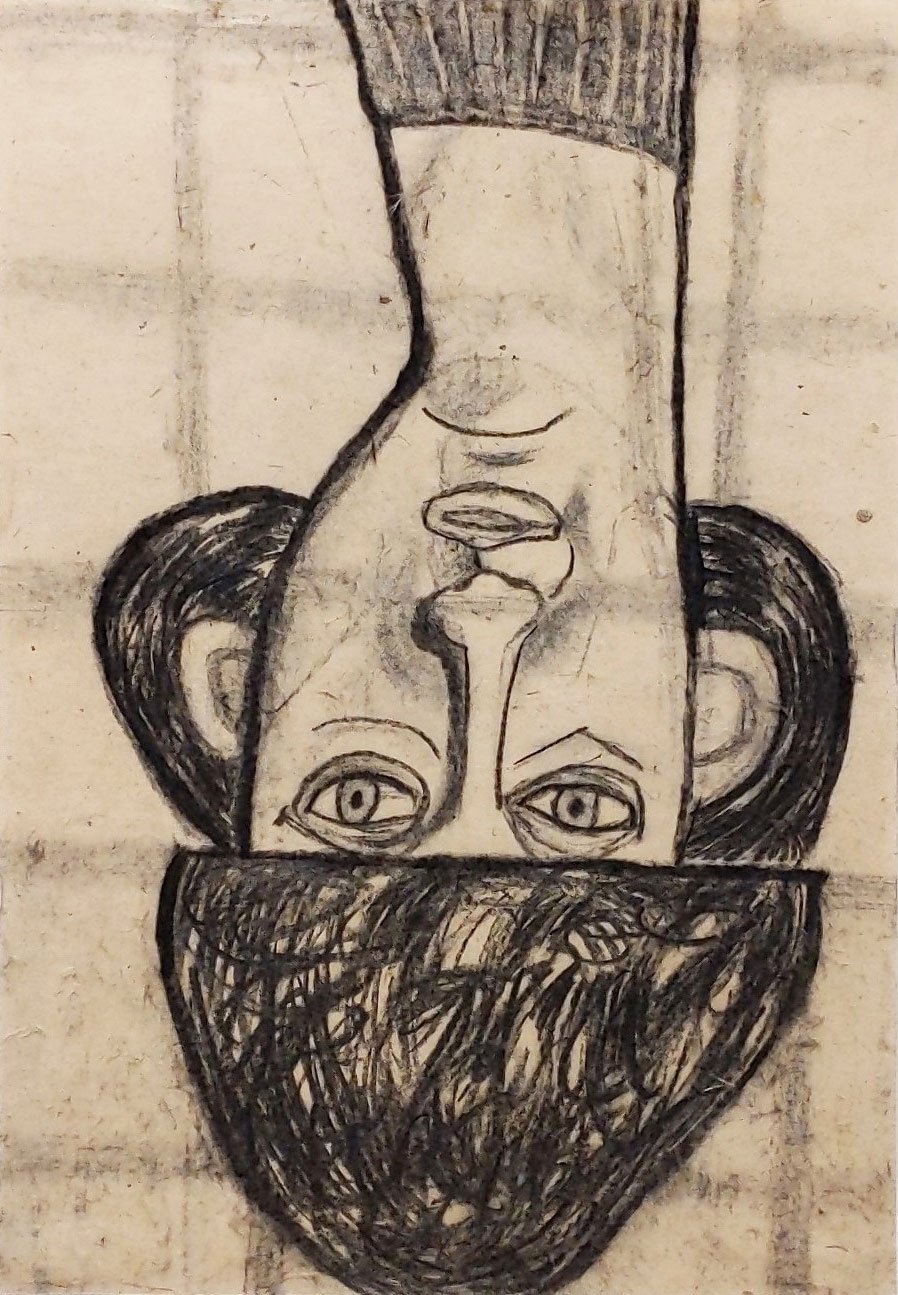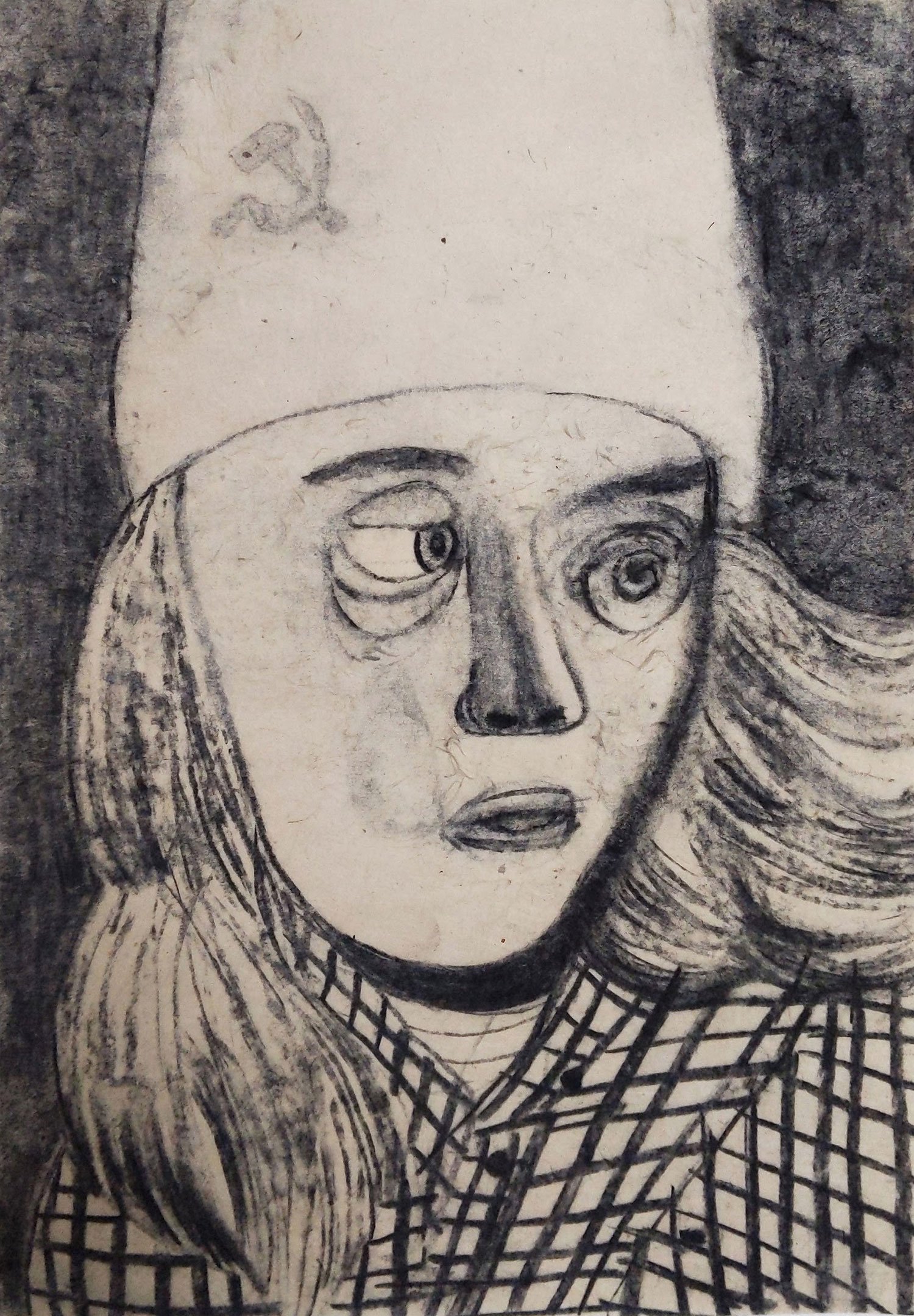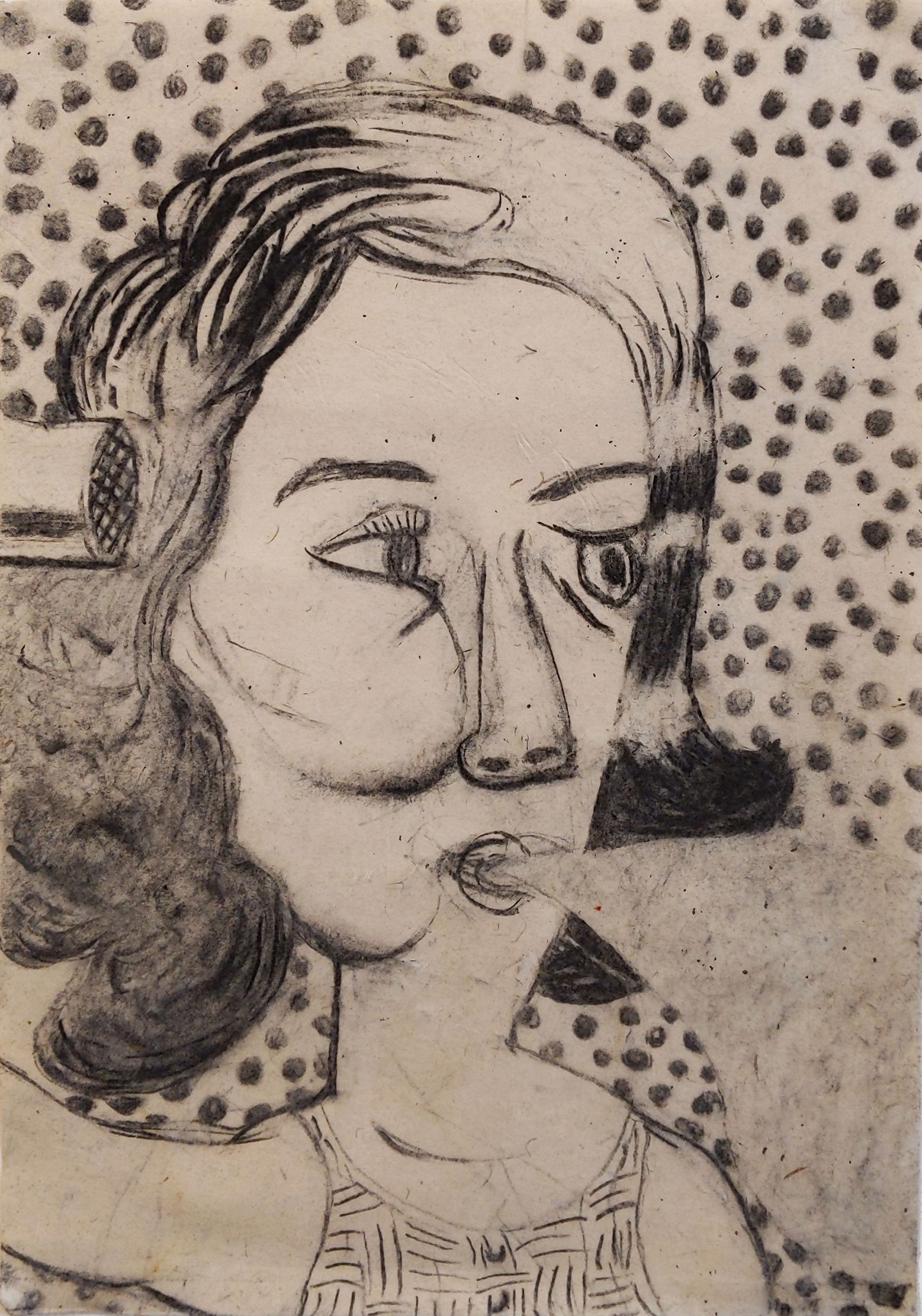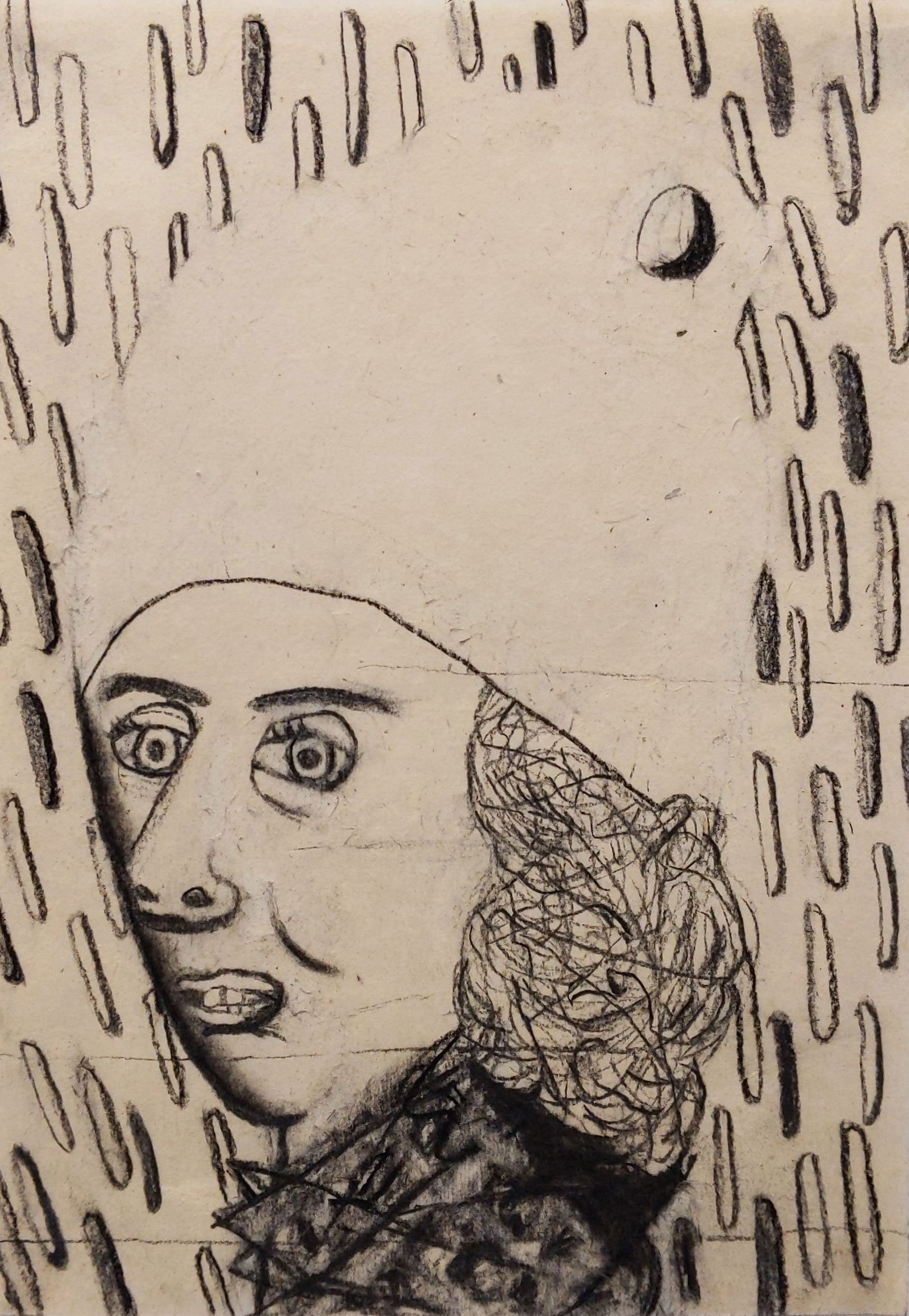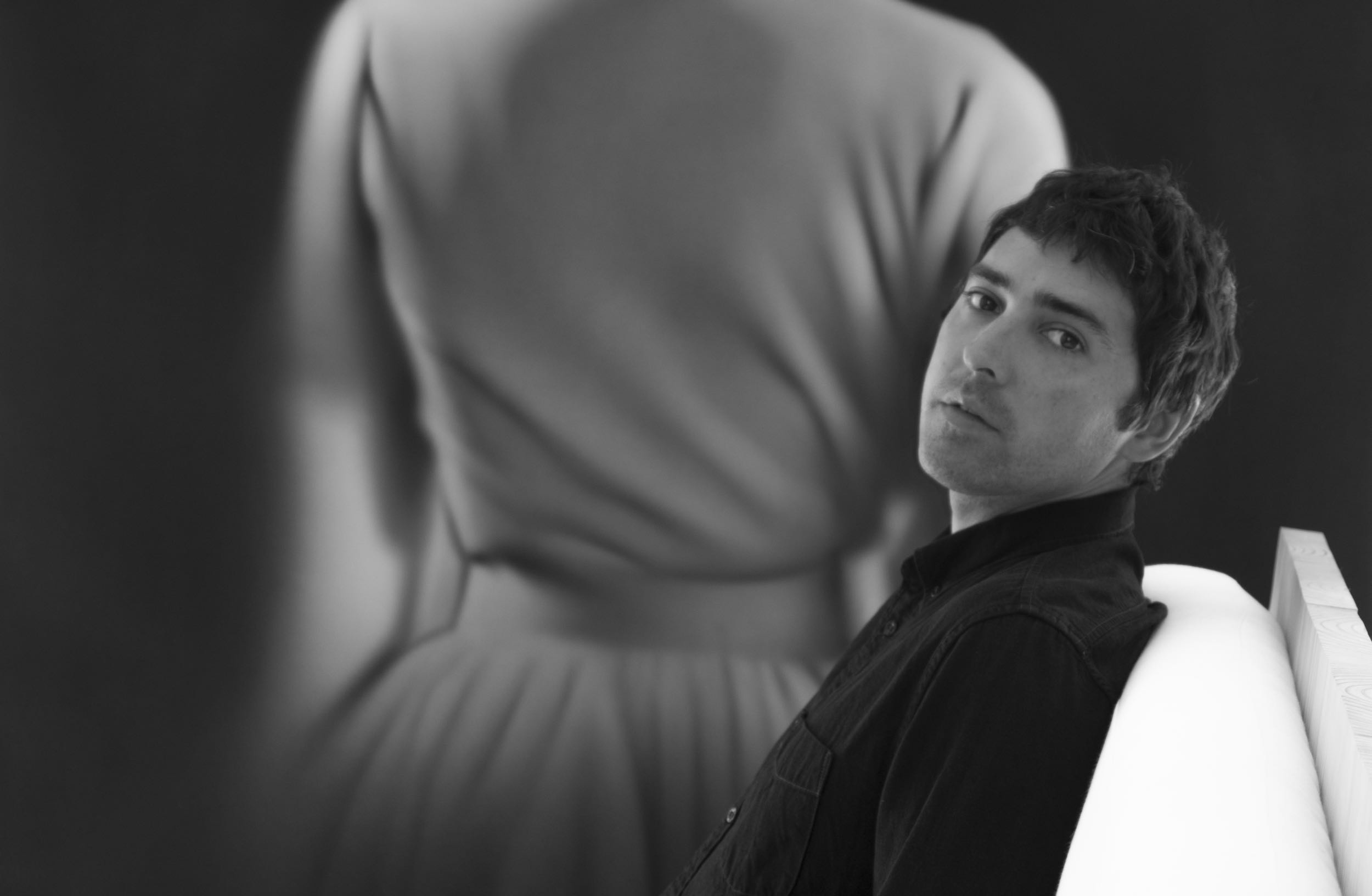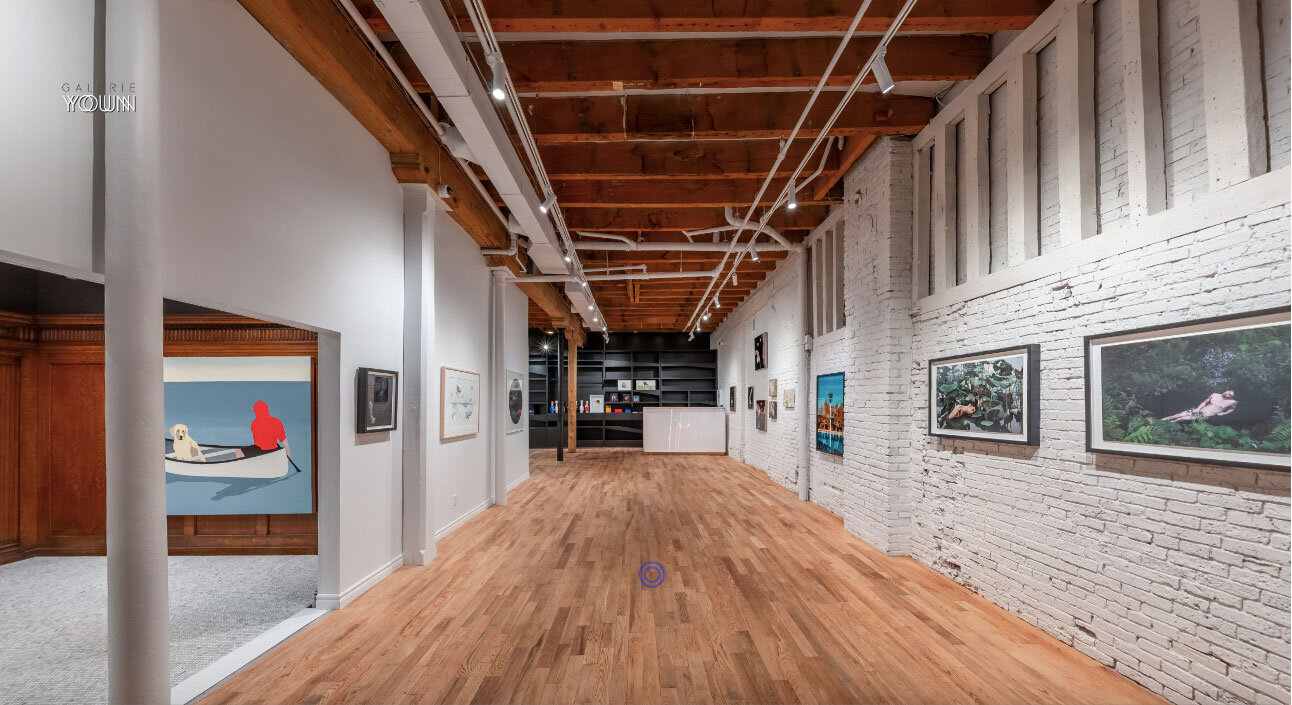Ye
The phrase “ye” comes from old English and has poetic and religious connotations. It’s an unusual word with a certain sense of other worldliness or strangeness. It effectively means you, but in the plural sense. It’s me looking at you or ye. Or even you looking at me or others.
Ian Healy’s drawings centre around portraits and the figure, a subject that motivates him most.
His intention is to talk about the human condition. All our emotions, needs, wants and purpose are examined.
“It’s a universal ideal but it’s the most obvious thing for me.”
This recent body of work in “Ye” centres around the park and was a response to the pandemic climate. Fictitious figures and environments, often with a nod to art history, are drawn onto a semitransparent lokta paper, like ghosts or memories.
“I imagined characters inhabiting the park, the park became a kind of vessel for creating portraits and figures.”
Healy likes to put something awkward into a work, maybe in a portrait, something not quite right, “like having a stone in your shoe or a bird shitting on you,” he says. This, he says, makes more sense to him: it’s a reflection of the complexities of life.
“I often don’t know what’s coming in a drawing or painting. This is the exciting part; you might have an idea of what you want but through the process of working it can become an alternative.”
ABOUT IAN HEALY
Ian Healy’s depiction of the contemporary figure navigate a precarious line where meaning meets form. His work using a variety of mediums, whether it is pastels, oil paint, or watercolour, are often produced in quick bursts to portray a sense of urgency and tension.
He draws on a variety of sources including literature, film, comic books and art history. He uses humour, historic reference and the imagination to tell stories or narratives, that are brought alive with an exuberance of colours.
He was born in Cork City in the Republic of Ireland. He gained a degree in Painting from the Crawford College of Art & design in 1992.
He has shown recently in a number of galleries in London, and his work is held in the collection of the Crawford Municipal Gallery, Ireland.
Parkman - Charcoal on Lokta paper, 2021, 27.5” x 21.6”
Man and Dog in the Park - Charcoal on Lokta paper, 2021, 27.5” x 21.6” (SOLD)
Walk Through the Park - Charcoal on Lokta paper, 2021, 27.5” x 21.6” (SOLD)
Running Through the Park - Charcoal on Lokta paper, 2021, 21.6" x 27.6" (SOLD)
Girl Near the Park - Charcoal on Lokta paper, 2021, 8" x 11.5"
Listening - Charcoal on Lokta paper, 2021, 8" x 11.5" (framed)
Park Woman - Charcoal on Lokta paper, 2021, 8" x 11.5" (framed)
Owner Head - Charcoal on Lokta paper, 2021, 8" x 11.5" (framed)
Trip to the Park - Charcoal on Lokta paper, 2021, 8" x 11.5" (framed)
Girl and Switch - Charcoal on Lokta paper, 2021, 8" x 11.5"
Looking Up In The Park - Charcoal on Lokta paper, 2021, 8" x 11.5"
Park Head (Waving) - Charcoal on Lokta paper, 2021, 8" x 11.5"
Park Head (Full Moon) - Charcoal on Lokta paper, 2021, 8" x 11.5"
Park Boy - Charcoal on Lokta paper, 2021, 8" x 11.5"
Parklife - Charcoal on Lokta paper, 2021, 27.5” x 21.6” (framed)
Picnic in the Park - Charcoal on Lokta paper, 2021, 27.5” x 21.6” (SOLD)
Parkman 2 - Charcoal on Lokta paper, 2021, 27.5” x 21.6” (framed)
Commie Youth Head - Charcoal on Lokta paper, 2021, 8" x 11.5" (SOLD)
Hangabout - Charcoal on Lokta paper, 2021, 8" x 11.5" (framed)
Nature Girl - Charcoal on Lokta paper, 2021, 8" x 11.5" (framed)
Park Kook - Charcoal on Lokta paper, 2021, 8" x 11.5" (SOLD)
Work Head - Charcoal on Lokta paper, 2021, 8" x 11.5" (framed)
Condition - Charcoal on Lokta paper, 2021, 8" x 11.5"
Head and Hand - Charcoal on Lokta paper, 2021, 8" x 11.5"
Head with Hat - Charcoal on Lokta paper, 2021, 8" x 11.5"
Sleeper - Charcoal on Lokta paper, 2021, 8" x 11.5"
Park Head, Park Shock - Charcoal on Lokta paper, 2021, 8" x 11.5"
The Lady - Charcoal on Lokta paper, 2021, 8" x 11.5"











